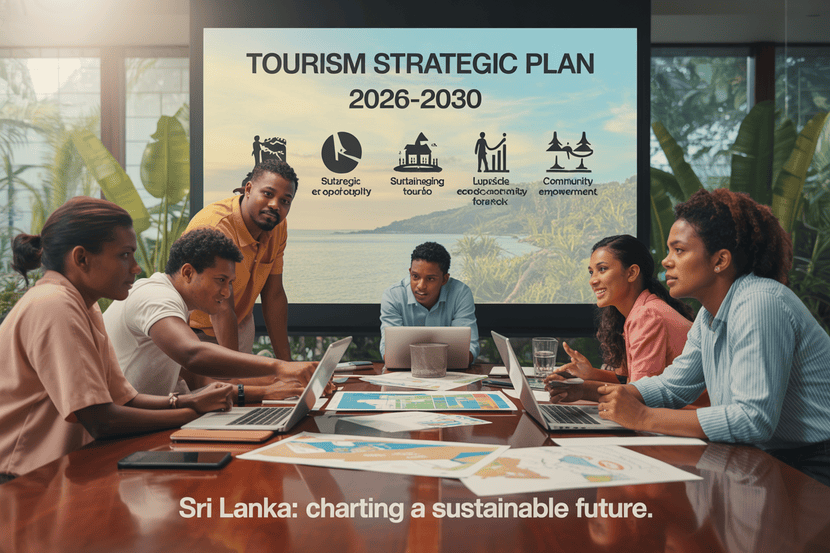≡-Thailand Experiences Sharp Over Four Percent Decline in Foreign Tourist Arrivals in First Half of This Year as Southeast Asia’s Second-Largest Economy Boldly Reshapes Strategic Post-Pandemic Tourism Goals – Viral of Today
<> Viral of Today <>
Home » ASIA » Thailand Experiences Sharp Over Four Percent Decline in Foreign Tourist Arrivals in First Half of This Year as Southeast Asia’s Second-Largest Economy Boldly Reshapes Strategic Post-Pandemic Tourism Goals Friday, June 27, 2025Thailand saw sudden slump of over four percent from foreign tourist arrivals during the first six months of 2025, bringing in only around sixteen million foreign tourists from January through June—a slump due to slower-than-expected resurgence from key source countries like China, rising travel costs worldwide, and competition from throughout Southeast Asia on an increase. To mitigate the same, Southeast Asia’s second-largest economy nation is actively reorganizing its tourism agenda through focus on higher-value experiences, source market diversification, and infrastructure upscaling for creating longer-term resilience and growth despite all odds under post-pandemic world travel.Thailand, Southeast Asia’s second-largest economy and one of the region’s most popular tourist destinations, has experienced a notable slowdown in international tourist arrivals in the first half of 2025. Between January 1 and June 22, the country welcomed approximately sixteen million foreign visitors—a 4.24 percent decline compared to the same period in 2024. This dip reflects broader shifts in global travel patterns, intensified regional competition, and evolving economic dynamics in source markets.Thailand’s Tourism at a Glance: Mid-Year PerformanceAccording to the latest data released by Thailand’s Tourism Ministry, the total number of international tourist arrivals from January 1 through June 22 stood at approximately 16.04 million. This figure, while substantial, marks a setback compared to the corresponding period last year, when tourist numbers were higher amid strong post-pandemic rebound momentum.The decline, though moderate, underscores the fragile nature of the tourism recovery. With Thailand relying heavily on this sector for economic stimulation, any fluctuation in foreign arrivals carries significant implications for national growth targets, employment rates, and investment inflows.Leading Source Markets: Malaysia and China Continue to DominateIn terms of visitor demographics, Malaysia continued to lead as Thailand’s top source market, contributing around 2.19 million arrivals during the six-month period. Chinese tourists closely followed, accounting for an estimated 2.17 million visitors.These two markets alone made up over twenty-five percent of total arrivals, reaffirming their critical role in supporting Thailand’s tourism economy. Historically, both Malaysia and China have played pivotal roles in feeding the Thai tourism pipeline due to geographic proximity, strong cultural links, and favorable visa arrangements.However, while Malaysian arrivals remained relatively stable, Chinese arrivals have yet to return to pre-pandemic levels. Travel hesitancy, economic concerns, and limited group tour availability have continued to temper the expected Chinese travel surge.Comparing to Pre-Pandemic BenchmarksBefore the global pandemic halted international travel, Thailand welcomed a record-breaking 39.9 million foreign tourists in 2019. That year set a benchmark that the government has consistently aimed to recover.Despite strong efforts to rebuild, the 2025 mid-year figure of 16.04 million suggests the nation remains short of reclaiming its pre-pandemic performance. This gap is likely to persist unless major structural and market-specific interventions are implemented.Adjusted Forecast Reflects Realistic OutlookReflecting the recent downturn, Thailand’s National Economic and Social Development Council (NESDC) revised its full-year forecast for foreign tourist arrivals. The council now estimates a total of 37 million arrivals for 2025—down from the previous target of 38 million.This adjustment comes amid external headwinds such as global inflationary pressures, regional economic slowdowns, and fluctuating airfare costs. While the revision is not drastic, it does signal a more cautious stance in terms of revenue projections and policy planning.The Role of Tourism in Thailand’s Economic StrategyTourism remains one of the most vital sectors in Thailand’s economy, contributing up to fifteen percent of GDP in pre-pandemic years. The decline in tourist arrivals, therefore, impacts not only service providers such as hotels, restaurants, and transport operators but also broader macroeconomic indicators like employment and foreign exchange earnings.With slower than expected growth, the government may need to expand or revise existing strategies to stimulate other economic sectors while finding innovative ways to boost tourism.Strategic Focus Areas for Rebuilding MomentumTo reverse the current trend and attract more tourists, Thailand is prioritizing several strategic pillars in its tourism development plan:1. Diversifying Source MarketsWhile traditional source markets like Malaysia and China remain important, Thailand is now targeting tourists from India, South Korea, Russia, and Europe. These regions show growing outbound travel interest and offer a buffer against market-specific downturns.2. Promoting High-Value TourismThe government is shifting away from a volume-based model to a high-value tourism strategy. This includes promoting wellness retreats, medical tourism, cultural experiences, and eco-friendly travel—segments known to attract higher spending visitors.3. Visa and Infrastructure ImprovementsEfforts are underway to streamline visa processes and upgrade tourism infrastructure, particularly in secondary cities. This includes expanding airport capacity, digitalizing visa-on-arrival services, and improving connectivity between provinces.4. Enhancing Public-Private CollaborationThe Tourism Authority of Thailand (TAT) and other agencies are working more closely with private stakeholders to co-develop marketing campaigns and offer incentive programs for international tour operators.Regional Competition IntensifiesThailand is not alone in vying for post-pandemic tourism recovery. Neighboring countries such as Vietnam, Indonesia, and the Philippines are aggressively positioning themselves as attractive alternatives.Vietnam has recently expanded its visa-free travel program, while Indonesia is ramping up promotions for destinations like Bali and Labuan Bajo. These moves could divert some tourist traffic from Thailand if additional incentives and innovations are not promptly implemented.External Factors Influencing ArrivalsSeveral global and regional developments are influencing tourist behavior and Thailand’s tourism metrics:Airfare Costs: Rising fuel prices have pushed up international flight fares, potentially deterring cost-sensitive travelers.Currency Fluctuations: The weakening of regional currencies against the Thai baht may make Thailand a more expensive destination for some markets.Geopolitical Tensions: Instability in parts of Asia and Europe continues to affect travel sentiment and planning.Weather Patterns: Unseasonal rainfall and extreme heat events in Thailand have also impacted tourist decisions, especially for outdoor and beach-centric travel.Mid-Year Events and Festivals as Tourism DriversDespite the challenges, Thailand successfully hosted a series of events in the first half of the year that drew both regional and long-haul visitors. These included the Songkran Festival in April, the Amazing Thailand Marathon in Bangkok, and various regional expos and cultural fairs.Such events continue to serve as important catalysts for tourism, offering opportunities for repeat visitation and global media attention. As the high season approaches, additional campaigns around local heritage and nature-based experiences are expected to help bolster numbers.Digital Nomads and Long-Stay Travelers: An Untapped Growth AvenueAnother evolving segment Thailand is targeting includes digital nomads, retirees, and long-stay travelers. With the global rise of remote work, Thailand’s affordability, tropical climate, and modern amenities make it an ideal hub.Policies around long-term visas and tax regulations are being reviewed to make the country more appealing to this demographic. Additionally, special promotional rates for extended accommodation stays are being rolled out in urban and coastal destinations alike.Expectations for the Second Half of 2025With the upcoming peak travel season, Thailand anticipates a stronger rebound in international arrivals. This optimism is supported by:Relaxed travel advisories in key marketsGrowing airline capacity and route restorationHeightened promotional activities across Asia, Europe, and the Middle EastIf these dynamics align as expected, Thailand could achieve its revised target of 37 million foreign arrivals by the end of the year. However, hitting that mark will require ongoing government vigilance, responsive marketing, and improved visitor management strategies.Thailand’s tourism sector, while resilient, continues to navigate complex terrain in 2025. The over four percent drop in foreign tourist arrivals during the year’s first half signals both caution and opportunity. With Malaysia and China still forming the backbone of inbound travel, and with emerging markets and new travel trends taking shape, Thailand must remain agile.Foreign arrivals for tourist purposes in Thailand declined significantly by over four percent during the first six months of 2025 due to global economic shifts and poor recoveries of leading markets. To counter this, the nation is reconsidering its tourism targets at the strategic level to entice high-value and diversified foreign tourists.By focusing on market diversification, experience enhancement, and sustainable tourism models, Thailand can weather short-term slowdowns while building a stronger, more balanced tourism economy in the long run.
This information will surprise you!
See also
- Read until the end to discover everything.
- Important information you need to know.
- Interesting facts and helpful tips.
Conclusion
Did you enjoy the news? Keep following us daily!













